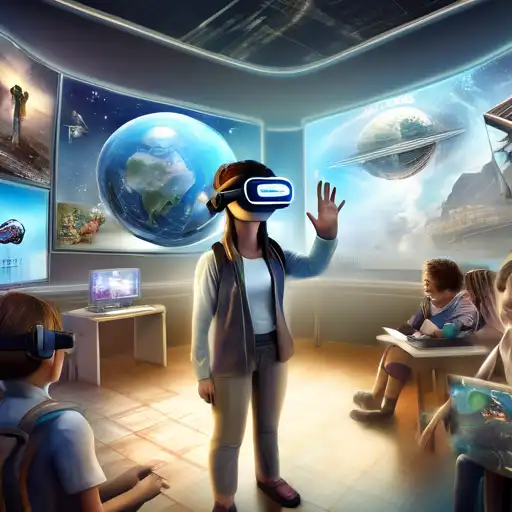Introduction to Virtual Reality in Education
Virtual Reality (VR) is rapidly transforming the educational landscape, offering immersive learning experiences that were once unimaginable. This technology enables students to explore historical sites, dissect virtual frogs, or even travel through space, all from the safety of their classroom. The potential of VR in education is boundless, making it a pivotal tool in modern teaching methodologies.
The Benefits of VR in Learning Environments
VR technology offers numerous advantages in educational settings. Firstly, it enhances engagement by providing interactive and immersive learning experiences. Students are more likely to retain information when they can visualize and interact with the subject matter. Secondly, VR facilitates experiential learning, allowing students to practice real-life skills in a controlled, virtual environment. This is particularly beneficial in fields such as medicine, engineering, and aviation.
Examples of VR in Action
- Medical Training: Medical students can perform virtual surgeries, gaining hands-on experience without the risks associated with real-life procedures.
- Historical Exploration: Students can virtually visit ancient civilizations, enhancing their understanding of history through immersive experiences.
- Science Education: VR allows for the exploration of complex scientific concepts, such as molecular structures or astronomical phenomena, in a tangible way.
Challenges and Considerations
Despite its benefits, the integration of VR in education comes with challenges. The cost of VR equipment and the need for technical support can be prohibitive for some institutions. Additionally, there is a learning curve associated with using VR technology, requiring both teachers and students to acquire new skills. However, as technology advances and becomes more accessible, these barriers are expected to diminish.
Future Prospects of VR in Education
The future of VR in education is promising, with ongoing advancements in technology paving the way for more innovative applications. As VR becomes more integrated into curricula, it has the potential to personalize learning, catering to the individual needs and learning styles of students. Furthermore, the development of collaborative VR platforms could enable students from around the world to learn together in virtual classrooms, breaking down geographical barriers.
Embracing the Virtual Revolution
To fully harness the potential of VR in education, stakeholders must invest in infrastructure, training, and content development. By doing so, we can ensure that VR becomes a sustainable and effective tool in shaping the future of education. The journey towards integrating VR into educational systems is just beginning, but its impact is already being felt across classrooms worldwide.
For more insights into innovative learning technologies, explore our EdTech Trends section.
